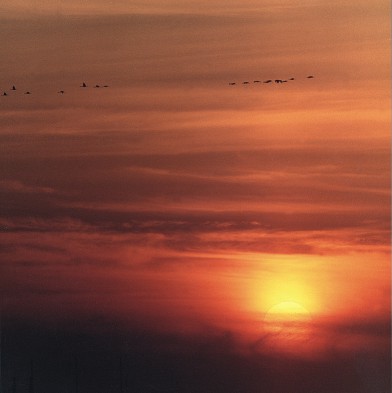In the north of Moscow Province, at the foot of the Klin-Dmitrov ridge,
there is an extensive lowland pain through which the rivers Dubna, Yakhroma
and Sestra flow. More than 10,000 years ago, glacial meltwaters formed
wide, shallow lakes here that later became a major system of wetlands:
Yakhroma, Orudevo, Dubna, Olkhovo-Batkovo.
Despite the development that has taken place on it, the Dubna-Yakhroma
plain has at present not lost its ecological integrity, and forms a complex
of various types of wetland -from practically unspoilt raised bogs to
landscapes totally transformed by humans, such as flooded pits of former
peateries.

In
the basins of the rivers Dubna, Khotcha and Vyulka, in Taldom and Sergiev
Posad districts, in the eastern part of the plain, an area of genuine
bog has been preserved to this day - the Homeland of the Crane. This natural
complex is included in the Ramsar Convention's prospective list of internationally
important wetlands as well as in a list of the world's major ornithological
sites. In autumn, around one and a half thousand common cranes gather
in the fields and bogs of the Homeland of the Crane, forming one of the
largest pre-migratory congregations of these remarkable birds in European
Russia.
Wetlands play a significant role in people's lives. They collect and
retain reserves of fresh water, regulate surface drainage during flood
periods, support groundwater levels, filter out toxic substances, and
stabilise the temperature and precipitation. Lakes, rivers and ponds serve
as places of recreation and tourism. People gather cranberries, cowberries,
bilberries and medicinal plants in the bogs and wet forest around them.
The wetlands are a habitat for many species of wild animal and plant.
Wetland ecosystems are particularly vulnerable and are easily destroyed
as a result of thoughtless exploitation.
The fact that it has been possible to preserve the Homeland of the Crane
wetlands system is largely down to the designation of parts of it as Specially
Protected Natural Areas (SPNAs): wildlife sanctuaries, natural monuments,
protected forests, and their buffer zones.
The Homeland of the Crane wildlife sanctuary, the first of the 15 SPNAs
currently in existence, was established in 1979. There is now an urgent
need to make another 5 sites with various conservation status officially
protected.

